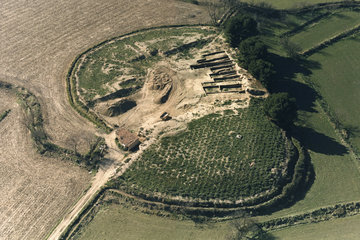Those that game together, stay together
The games we play reflect the socio-ecological characteristics of the culture that we are in
Play is important for the development of complex social, emotional, physical, and cognitive skills. Play provides young individuals with a safe space to practice new behaviors without grave repercussions. While most animals engage in play, only humans engage in rule-based games. Which kinds of games people play – competitive or cooperative – may depend on their cultural background. In a new study, researchers from Leipzig, Jena, Gera, and Australia screened historical data to answer the question whether cultures play games that correspond to how cooperative they are.

Humans all over the world play games, but games are not played equally throughout the world’s cultures. Humans might use games to store and teach cultural-specific information to community members. For example, if you think of the last game that you played, was it a cooperative game, a competitive game, or a game that you played by yourself? “If you live in Germany, chances are high that you played a competitive game,” says Sarah Leisterer-Peoples, a researcher at the Max Planck Institute for Evolutionary Anthropology in Leipzig. “We think that games might reflect aspects of human cultures, such as how competitive and cooperative the cultures are.”
Previous research suggests that in socially hierarchical cultures, or those with differences in status and wealth, competitive games are played frequently. And the opposite has also been suggested—in egalitarian cultures, or those with little or no differences in status and wealth, games tend to be more cooperative. However, previous studies have investigated this relationship in only a small handful of cultures, thus limiting the breadth of this claim. In a new study making use of historical data, researchers from Leipzig, Jena, Gera, and Australia aimed to answer the question whether the games cultures play correspond to how cooperative they are.
A historical perspective on Pacific cultures and the games they played
In a first step, the research team sorted through a database on historical games played by cultures located in the Pacific. “The cultures in our study lived in a broad geographic range, spanning the Pacific Ocean. The cultures were very diverse, but also shared similarities, which allow for a comparison on several aspects of the cultures,” says Leisterer-Peoples. For example, when two groups live next to each other, it might be that they share some characteristics, such as how they get their food, but they might differ in other aspects, such as the norms surrounding competitive behavior. “We tried to hone in on these differences, while accounting for their similarities,” says Leisterer-Peoples.
In a second step, the scientists identified characteristics of cultures that indicate how cooperative they might be. “One of the difficulties with historical data is that you can’t go back in time to do interviews with people from different cultures, but have to rely on the historical documentation of these cultures.”, says Leisterer-Peoples. For example, they looked at how socially hierarchical cultures were structured, how often members of a culture conflict with each other, how often cultures conflicted with other cultures, and how often group members hunt and fish in groups. “These are real-world proxies for cooperative behavior”, says Leisterer-Peoples. In the end, they were able to identify 25 cultures that had historical information readily available on both the games they played and relevant cultural characteristics.
Games mimic real-world behavior

The researchers found that the cultures that frequently engage in conflicts with other cultures have more cooperative games than competitive games. On the other hand, cultures with frequent conflicts with their own community members have more competitive games than cooperative games. How socially hierarchical the cultures were and whether they fished and hunted in groups did not reliably relate with what kinds of games were played.
“These findings might be non-intuitive at first glance, but make sense in light of theories on the evolution of cooperation in cultural groups. In times of conflict with other cultures, group members have to cooperate with one another and compete with their opponents. This is reflected in the kinds of games that are played—games with competing groups. And when there’s a lot of conflict among the members of a group, they tend to play games that are competitive. These findings suggest that the games we play reflect the socio-ecological characteristics of the culture that we are in,” says Leisterer-Peoples. Games mimic real-world behavior and may be one avenue in which group norms are learned and practiced during childhood.
“Science lives through replication of previous findings. It’s important that future studies investigate this finding further, especially in other parts of the world and in modern-day cultures. We don’t know whether this effect is still relevant in today’s gaming culture. Nowadays, store-bought games and video games have overtaken the traditional games that were played in children’s free time. Future studies also need to investigate the specific skills that are learned through games, not just the degree of cooperation in the games,” says Leisterer-Peoples. “This is just the beginning of studies on games across cultures. There’s much more to uncover!”
[SLP/SJ]













